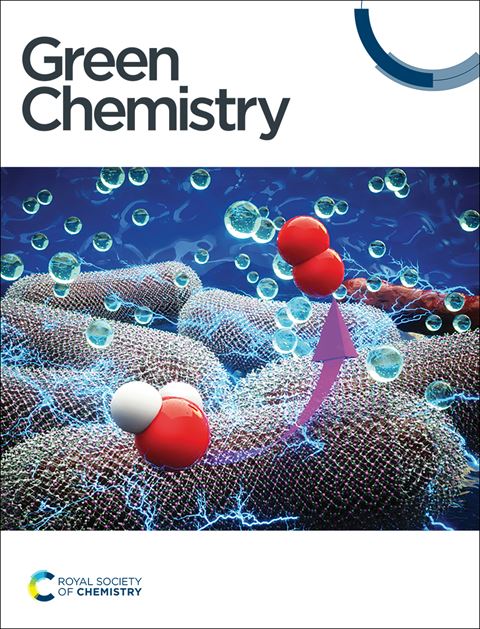Metabolic modification of Sphingobium lignivorans SYK-6 for lignin valorization through the discovery of an unusual transcriptional repressor of lignin-derived dimer catabolism†
IF 9.3
1区 化学
Q1 CHEMISTRY, MULTIDISCIPLINARY
引用次数: 0
Abstract
Sphingobium lignivorans SYK-6 catabolizes guaiacylglycerol-β-guaiacyl ether (GGE, a β-O-4-type dimer) and 1,2-diguaiacylpropane-1,3-diol (DGPD, a β-1-type dimer) derived from lignin. Recently, SLG_35860 containing TetR- and MarR-type transcriptional regulator motifs was suggested to be involved in the regulation of GGE and DGPD catabolism. Here we investigated the role of SLG_35860 in the transcriptional regulation of GGE and DGPD catabolism genes. SLG_35860 designated ligS repressed 11 genes involved in GGE and DGPD catabolism. LigS binds directly to specific sequences in the promoter region of each gene. The MarR domain was shown to be involved in these bindings; however, GGE, DGPD, and their metabolites did not function as effectors of LigS. We discovered unidentified compound(s) in the black liquor of oxygen-soda anthraquinone pulping of Japanese cedar that SYK-6 cannot metabolize and that acted as effector(s). Therefore, LigS constantly represses the transcription of the GGE and DGPD catabolism genes to low levels. Based on these findings, we examined the productivity of a polymer building block, 2-pyrone-4,6-dicarboxylic acid (PDC), from GGE, DGPD, and a GGE metabolite using an engineered ligS mutant. The rates of PDC production from each compound by this strain were 1.5–6.0 times higher than those of a PDC-producing strain carrying ligS.
求助全文
约1分钟内获得全文
求助全文
来源期刊

Green Chemistry
化学-化学综合
CiteScore
16.10
自引率
7.10%
发文量
677
审稿时长
1.4 months
期刊介绍:
Green Chemistry is a journal that provides a unique forum for the publication of innovative research on the development of alternative green and sustainable technologies. The scope of Green Chemistry is based on the definition proposed by Anastas and Warner (Green Chemistry: Theory and Practice, P T Anastas and J C Warner, Oxford University Press, Oxford, 1998), which defines green chemistry as the utilisation of a set of principles that reduces or eliminates the use or generation of hazardous substances in the design, manufacture and application of chemical products. Green Chemistry aims to reduce the environmental impact of the chemical enterprise by developing a technology base that is inherently non-toxic to living things and the environment. The journal welcomes submissions on all aspects of research relating to this endeavor and publishes original and significant cutting-edge research that is likely to be of wide general appeal. For a work to be published, it must present a significant advance in green chemistry, including a comparison with existing methods and a demonstration of advantages over those methods.
 求助内容:
求助内容: 应助结果提醒方式:
应助结果提醒方式:


